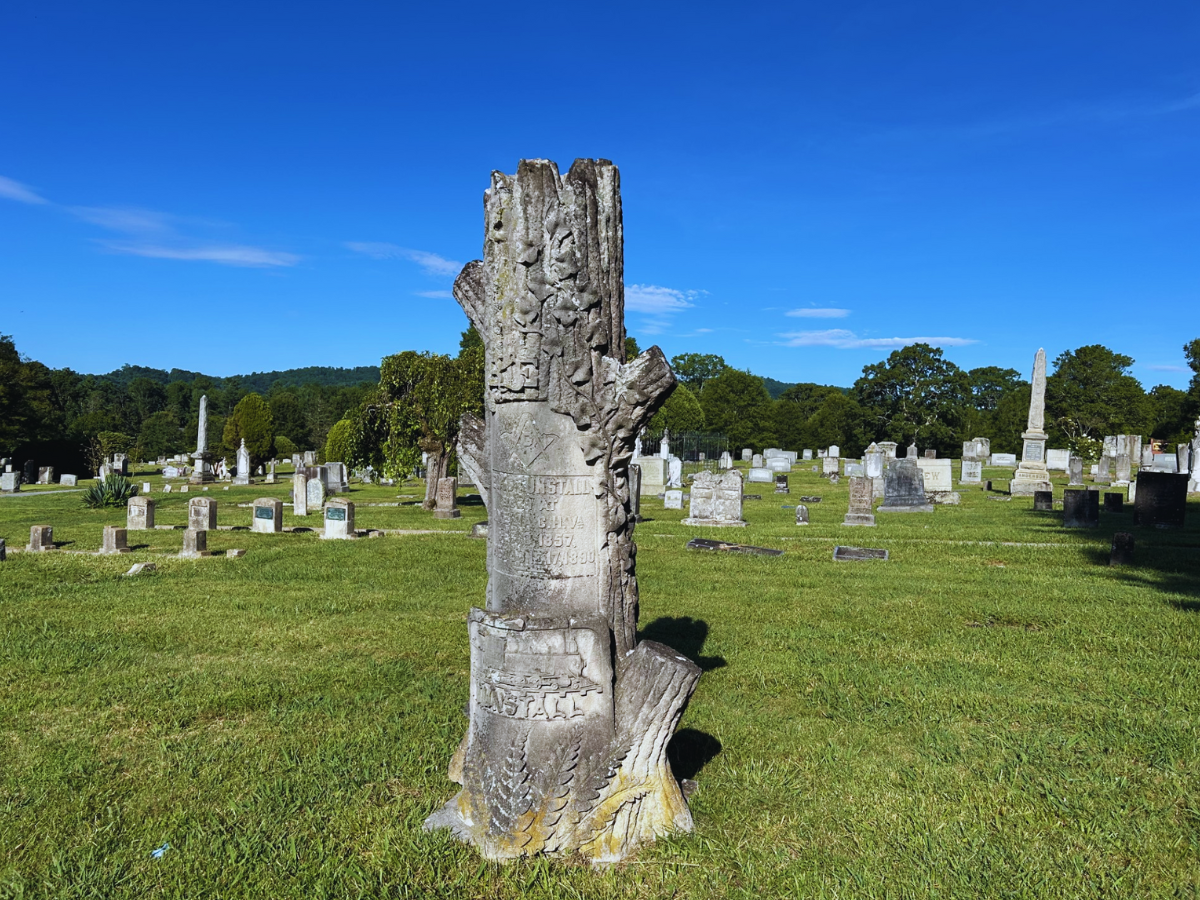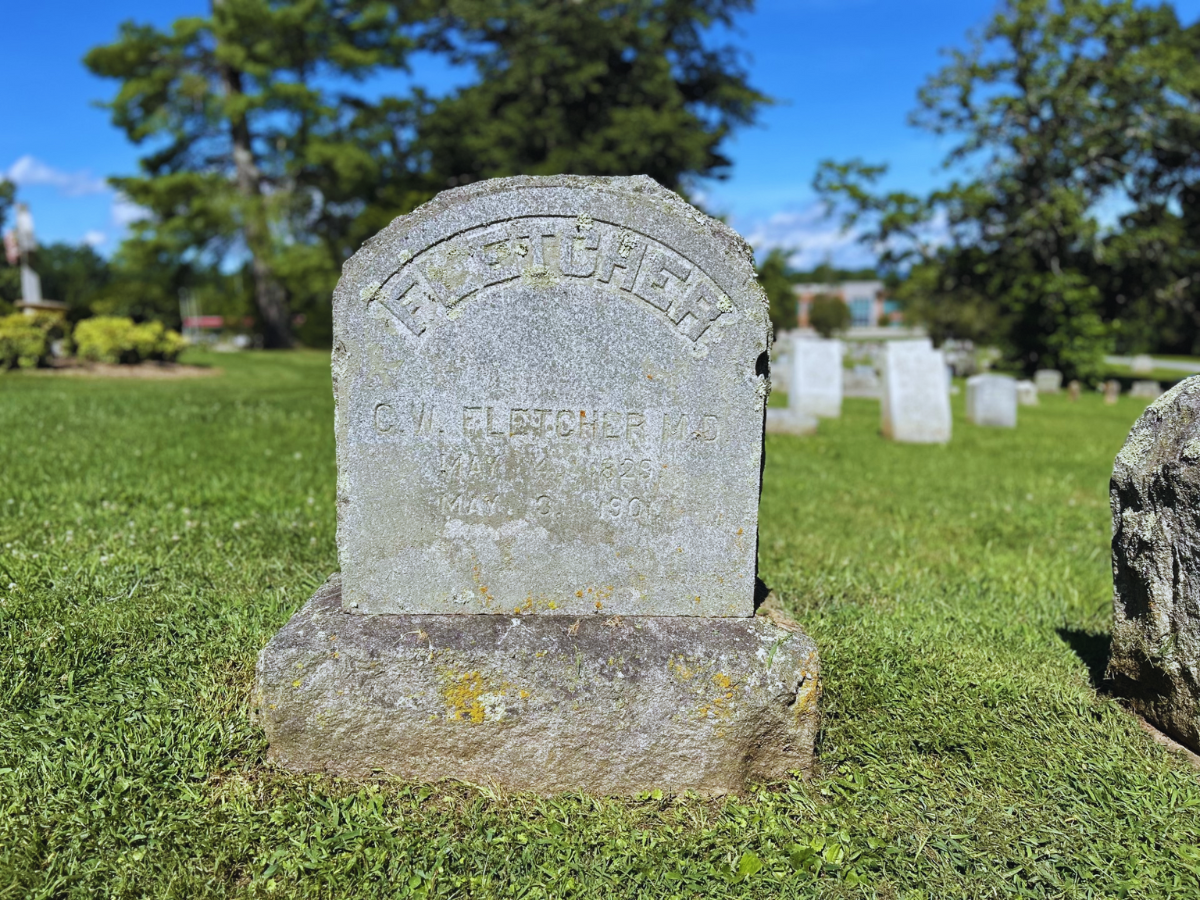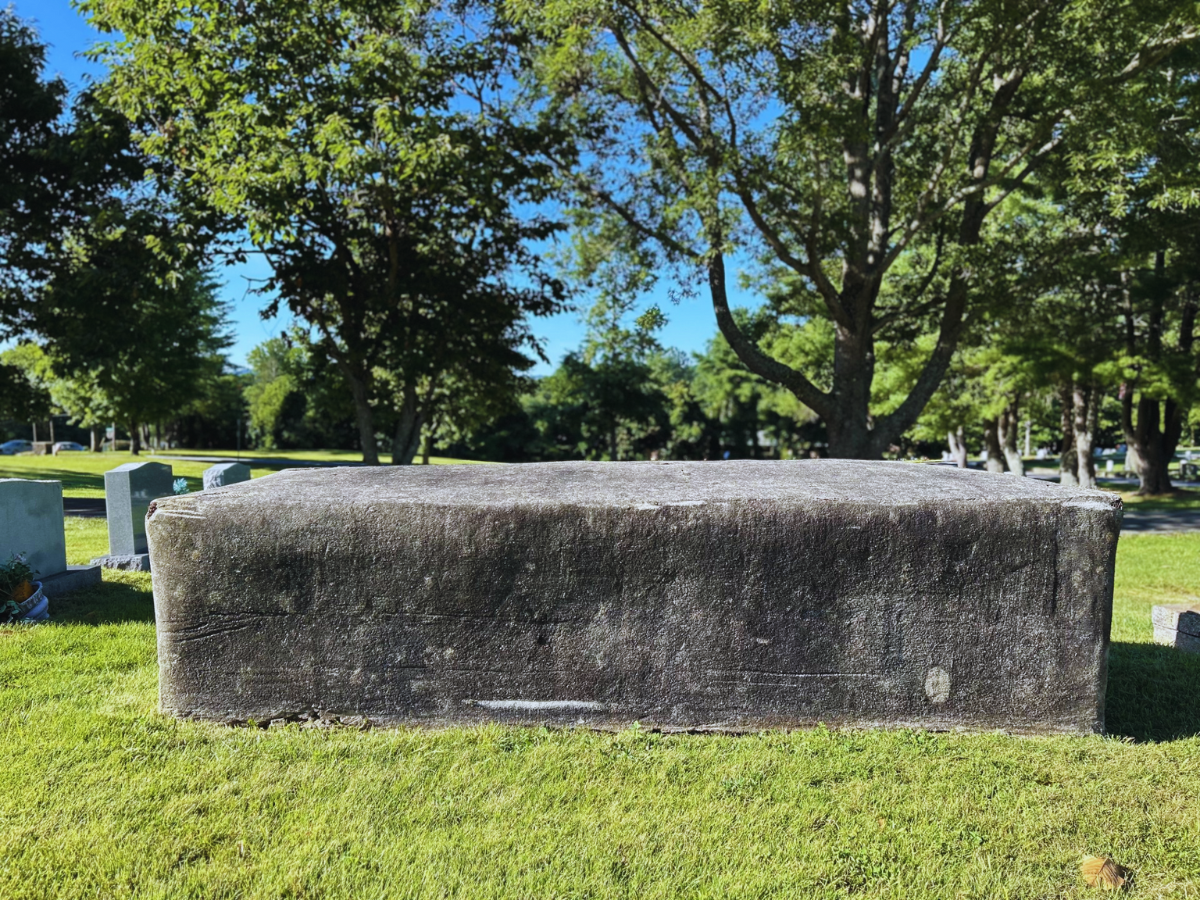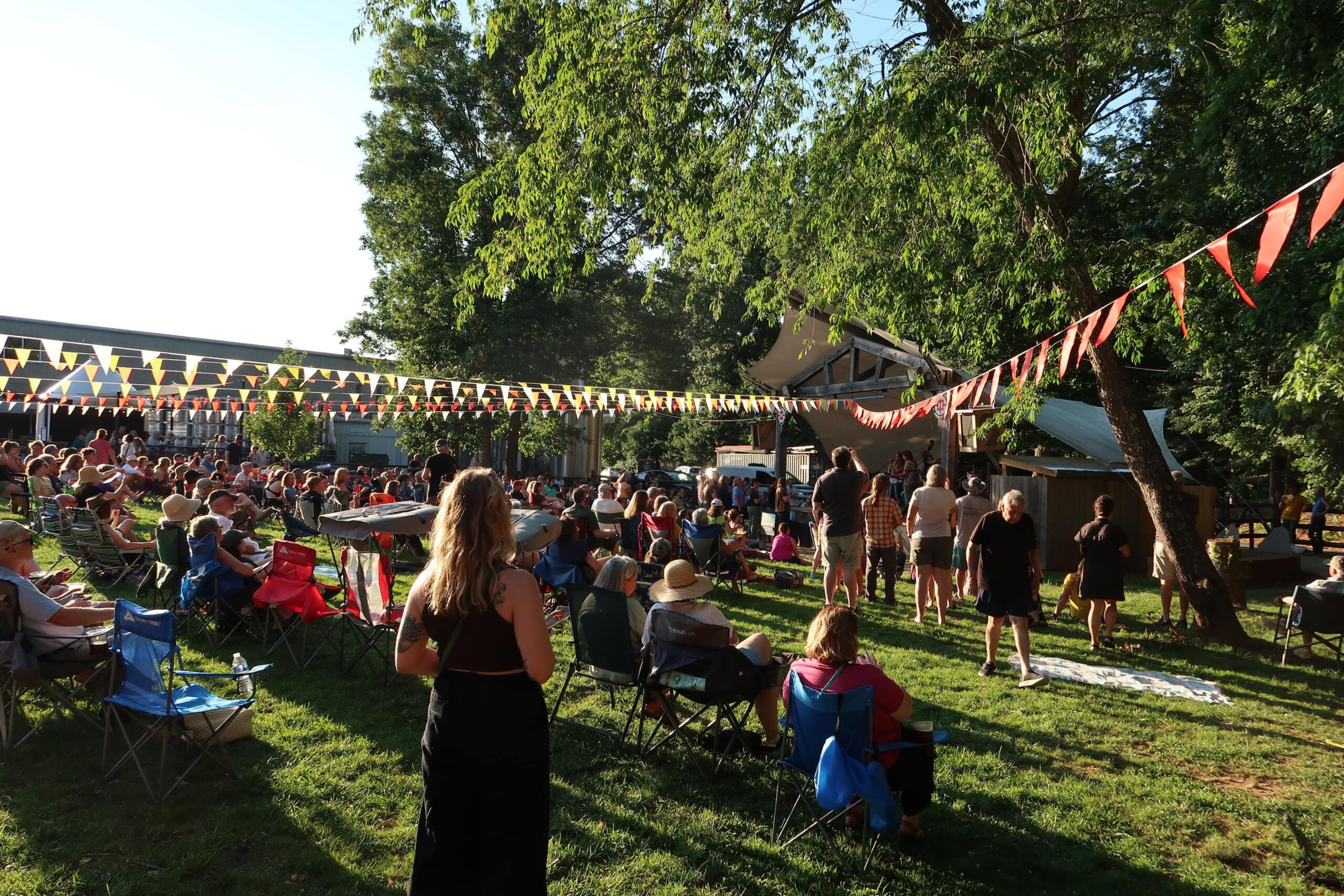Editor’s Note: Western North Carolina is rich with untold stories—many resting quietly in local cemeteries. In this Tombstone Tales series, we explore the lives of people from our region’s past whose legacies, whether widely known or nearly forgotten, helped shape the place we call home.
ASHEVILLE, N.C. — In a quiet corner of Riverside Cemetery stands one of the few mausoleums in the historic grounds. The mausoleum marks the final resting place of Asheville‑born abstract painter Kenneth Noland. Its presence is striking not only for its structure but also for the pair of lifelike plastic deer that have long stood guard in front, an unusual tribute that echoes the artist’s fond embrace of visual surprise.
Noland’s memorial was planned and built before his death – a detail drawn from an account by writer Jamaica Kincaid, who wrote that Noland and his wife, Paige Rense, had selected the site, materials, and design in advance, joking about who’d “go first” in passing.
That planning reflects Noland’s thoughtful preparation and echoes the intentional precision of his art. Born in Asheville on April 10, 1924, Noland served in the U.S. Air Force during World War II and later attended Black Mountain College on the G.I. Bill, where Josef Albers and Ilya Bolotowsky shaped his developing theories of color. After study in Paris under sculptor Ossip Zadkine and teaching in Washington D.C., he became a leading voice in the Color Field movement of the 1950s and ‘60s.
His inclusion in Clement Greenberg’s 1964 “Post‑Painterly Abstraction” exhibition and a 1977 retrospective at New York’s Guggenheim cemented his reputation. Today, his paintings are held in major museums across the globe, from MoMA to Tate and the Whitney.
Noland maintained strong ties to his native state and received the North Carolina Award for Fine Arts in 1995. Though he spent his later years in Maine, when he died of kidney cancer in 2010, at age 85, his ashes were returned to Asheville for interment in his prebuilt mausoleum.
When the Noland Mausoleum was installed in Riverside Cemetery in 2007, it was the first walk-in mausoleum of its kind to be placed in the cemetery in 90 years, according to then-cemetery manager David Olson. Measuring 12 feet square and weighing 59,000 pounds, the granite structure is one of the most modern memorials in Riverside.
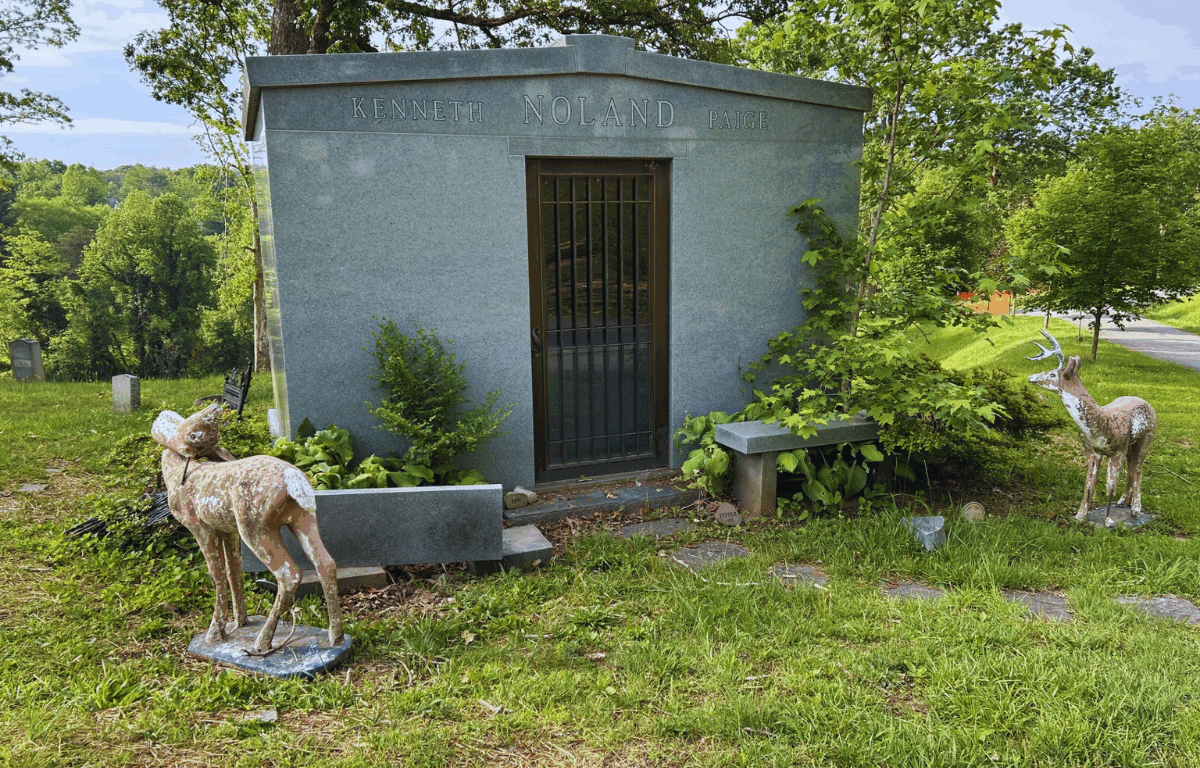
While most visitors might pause at his polished stone structure, it’s the quirky plastic deer set before it that often turn heads. In September 2024, the deer were damaged when the remnants of Hurricane Helene swept through Asheville. Their exact origin or symbolism is unknown, but the deer seemed a playful nod to the visual juxtapositions Noland embraced in life. Over time, they became an informal memorial in their own right.
For Kenneth Noland, a native son who helped the world see color in a new way, his final resting place blends structure, art, and a touch of whimsy. A legacy alive with color, contrast and curiosity – just as he designed it to be.
Riverside Cemetery in Asheville, North Carolina
[wpgmza id=”3″]
-
Tombstone Tales: Kenneth Noland, Asheville’s master of color and form
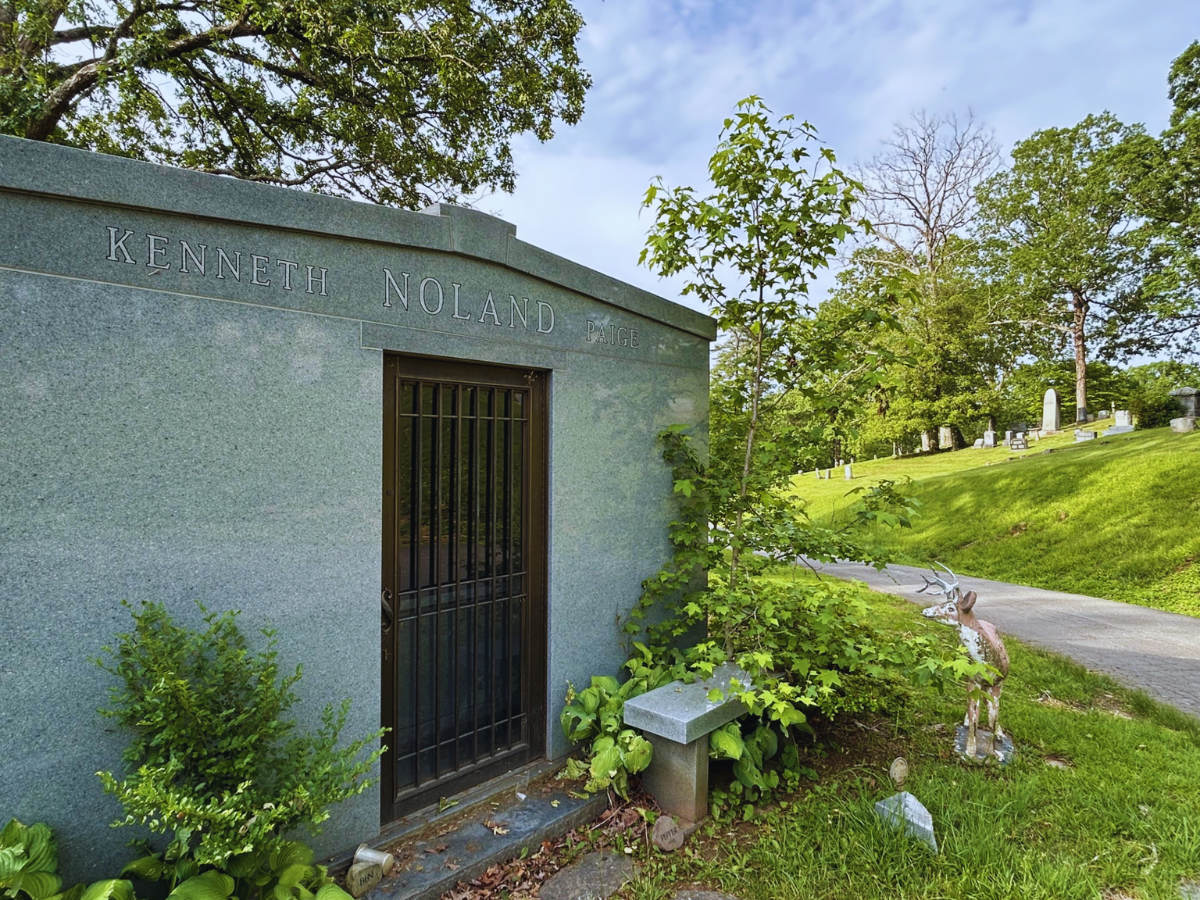
Explore the life and legacy of Asheville native Kenneth Noland, a pioneer of abstract art, and the story behind his walk-in mausoleum in Riverside Cemetery.


